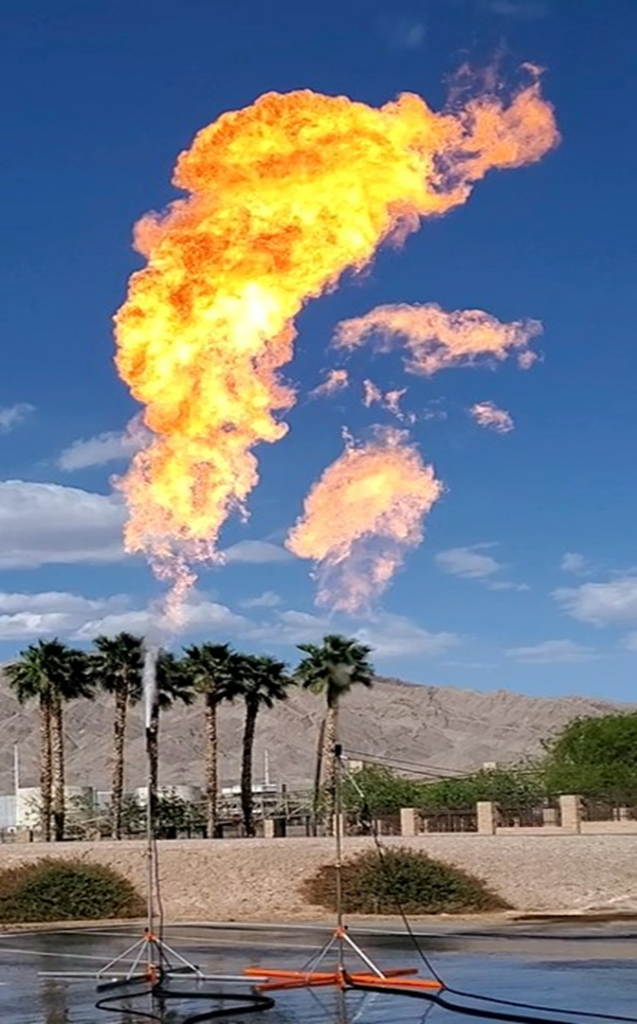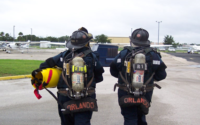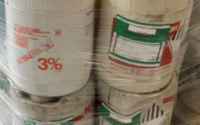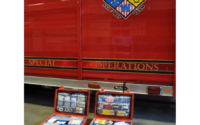Understanding Auto-Refrigeration
Michael S. Hildebrand, CSP
What is Auto-Refrigeration?
Auto-refrigeration can be experienced with liquefied compressed gases including Liquefied Petroleum Gases (LPG), Liquefied Natural Gas (LNG), chlorine, ammonia, carbon dioxide, and other types of liquefied gases. An emergency involving auto-refrigeration can create safety issues and prolong time at incident scene if you do not understand what is occurring.
Auto-Refrigeration is a process where a liquefied compressed gas goes through an unintentional or uncontrolled “phase change” from a liquid state to a gas state. The most common emergency situation where auto-refrigeration comes into play involves propane.
Propane is stored and transported in a pressure vessel and will stay at near constant temperature if kept at constant pressure. Think of your propane gas grill. When it is not being used you can touch the side of the tank with your hand and it will be close to whatever the ambient air temperature is, but if you open the valve and ignite the grill, the tank will feel cold.
At a given temperature of the liquid a corresponding vapor pressure will boil off into a vapor until the vapor pressure in the container is equal inside the container. At temperatures above -44°F (boiling point of propane) the liquid will boil off vapor until the vapor pressure in the container is equal to the pressure of the surrounding atmosphere. In a closed container, boiling (vaporization) will stop when this equalization is achieved.

When the propane tank valve is opened and the vapor is allowed to escape, the pressure inside the container will drop because the surface pressure of the liquid will exceed the vapor pressure in the container and vaporization (boiling) of the liquid propane will occur. The boiling will continue until the container valve is closed and again reaches equilibrium.
In order for the propane to change from a liquid to a gas, a significant amount of energy is required. Energy in the form of heat is drawn from the liquid. The liquid then replaces this heat by drawing energy from the matter surrounding it. Mainly, heat comes from the air outside the container. The heat is transferred through the container walls of the container to the LIQUID propane. Very little heat is transferred through the container walls to the vapor space in the container.
In an accident scenario, auto-refrigeration can come into play because unlike the gas grill example, the vaporization of the propane from a liquid to gas state is unregulated. As propane vaporizes, it initially gets its energy directly from the liquid. But when this capacity to draw energy from the liquid is exceeded, the temperature of the liquid begins to drop as energy is drawn from it. The propane actually cools itself and goes into auto-refrigeration and vaporization slows down or stops.
Underground Tank Scenario
In an accident involving an underground propane tank, the gas release is uncontrolled and auto-refrigeration can come into play. Consider the following example:
An end loader grading a yard for installation of a swimming pool in the rear of a new home accidentally strikes the top access of a 500-gallon underground propane tank. When the fire department arrives a propane vapor cloud can be observed shooting up in the air and there is no fire. The underground tank riser is exposed and bent at an angle and will require removal and repair by a propane technician. This scenario is a common problem with underground tanks, even with the proper installation and adequate protection. Damage to underground tank risers are usually caused by heavy construction equipment, mowers, or snow plows.
When an underground tank’s riser is damaged and the pipe shears, there is an initial “blow off” of the propane tank as the tank rapidly depressurizes. Once this initial blow-off occurs, the tank may go into auto-refrigeration and the rate of release of flammable gas will slow down significantly. Rapid vaporization of the propane will also frost the underground tank’s shell and freeze the ground around the area where the tank is exposed. The fact that the tank is in auto-refrigeration gives repair crews under the protection of hoselines time to change out the damaged parts.
A common mistake made by inexperienced Incident Commanders is that once the vapor cloud has subsided, it’s assumed that the tank is empty because the vapor cloud has disappeared. If the tank valve is on fire, the fire may have subsided or even go out and the incorrect assumption is made that the tank is empty and the product has burned off. The tank might in fact be empty, however, what is more likely is the tank has gone into auto-refrigeration. The incident is not over, it just slowed down on the timeline. Once the energy required to warm up the refrigerated propane is obtained from the heat of the surrounding ground, the propane warms again and will start to vaporize and the propane vapor cloud will reappear. If the valve was on fire and has extinguished during auto-refrigeration, the situation can become dangerous as a vapor cloud forms. The cycle of propane cooling, low intensity leaking, then warming, boiling again and creating a vapor cloud can go through several cycles until the tank has emptied or has been repaired by a propane technician. Order food and beverage because you are going to be there for some time. You do not want to look bad leaving the incident scene thinking the tank is empty, only to have to return again. There is also the possibility of an ignition of the propane as the liquid begins to vaporize and is released to the atmosphere.
Two street smart tips to consider when dealing with underground propane tanks are:
- Even when the ground is frozen on the surface in winter, the ground the tank is buried in is warmer than the surface, which supplies the needed heat to warm the propane to start the boiling process. Keep in mind that even when the ground surface temperature is at the freezing point of 32°F, three feet underground the temperature can be 52° F. The boiling point of propane is -44°, so there is plenty of energy in the form of heat to warm the liquid inside the tank. The warmer the weather, the faster the boiling/vaporization process.
- Presence of a white vapor cloud is not an indicator that there is no propane gas present. The vapor cloud is caused by the cooler propane gas coming into contact with the warmer moist air. The white fog you are seeing is a combination of cooler water moisture from the air and the propane gas. When the vapor cloud warms, the white fog disappears and you still have propane gas in the vicinity of the leak. Remember that propane gas by itself is colorless. You have to monitor the air for gas concentrations to establish Safe, Unsafe, and Dangerous Zones. Air monitoring is especially important if a propane technician is working on the valve or underground tank riser.
Other Liquefied Compressed Gas Scenarios
There are several other common auto-refrigeration scenarios involving liquefied compressed gases.
Flaring LPG
Auto-refrigeration of propane may also come into play during flaring operations. If off-loading a propane tank truck or rail car is unsafe due to tank configuration or damage, burning off the propane through a controlled burn using a flare can be a safe option. Flaring off the propane vapor from the container has to be controlled to maintain the right rate of vaporization. If the burn-off rate is too rapid, the propane can go into auto-refrigeration.
One drawback of flaring is the time required to burn off the product to prevent it from going into auto-refrigeration. For example, using a 2-inch-diameter hose of 150 feet in length, it would take approximately 177 hours to flare off 30,000 gallons of propane, 54 hours to burn off 11,500 gallons, and 14 hours to burn off 3,000 gallons (assuming the temperature of the propane was 0°F). If the Incident Commander decides to go with a flaring option, the time required to accomplish the task must be weighed against other factors such as safety, disruption of transportation systems and businesses, and the safety and speed that other options may present. See Figure-1.

Figure 1 Flaring operations involving an overturned and stressed MC-331 cargo tank truck transporting propane. Photo: Ron Huffman.
See the You Tube video showing propane boiling and the pressure dropping by Ron Huffman. Wait four seconds for the annoying advertisement to end! [https://www.youtube.com/watch?v=Ox6V2773Q7Q]
Ammonia and Chlorine – If the container shell holding these materials is breached, they might go into auto-refrigeration. See the Chlorine Institute video at the You Tube link. https://www.youtube.com/watch?v=1A41PEGUXYg
Sources:
Hazardous Materials: Managing the Incident (5th edition), by Gregory G. Noll and Michael S. Hildebrand, Jones and Bartlett Learning (2024), Page 136.
Propane Emergencies (3rd edition), by Michael S. Hildebrand and Gregory G. Noll, Chester, MD: Red Hat Publishing (2007), Pages 262-264.




